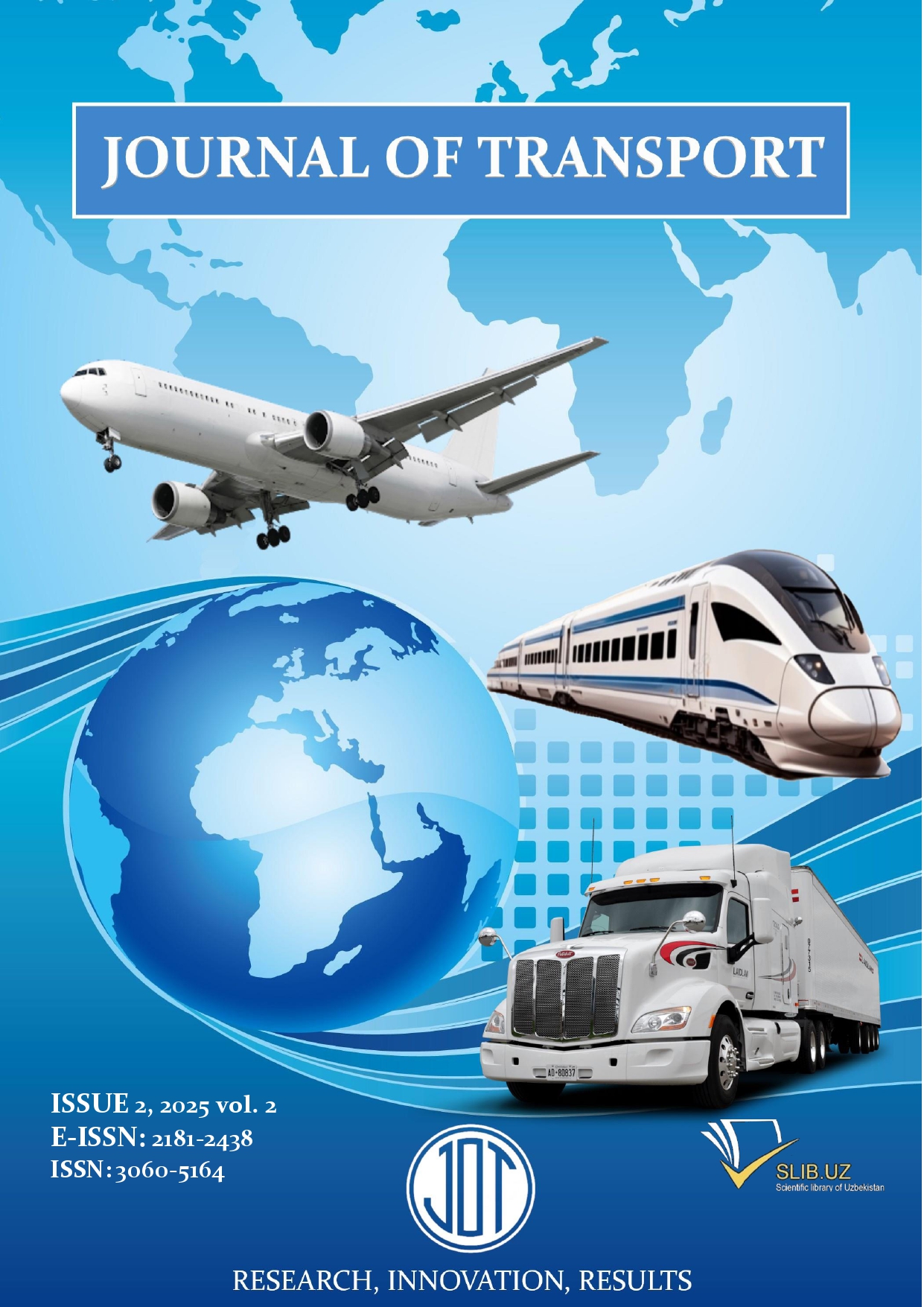Mathematical model for studying the danger zone of train approach on sections of the roads of JSC "Uzbekistan Railways"
Abstract
The safety of train traffic depends on the reliable operation of intermediate train control systems, the basis of which is the rail circuits as a sensor of information about the location of trains. Currently, the railway networks of many countries of the world are switching to continuous rail circuits of the tonal type with potential receivers, but with all their advantages, these rail circuits have disadvantages, which are that when a train approaches the rail circuit at a certain distance, it begins to short-circuit it and the prohibitory light turns on when the traffic light passes, that is, such rail circuits have additional short-circuit zones when the train approaches and leaves the rail circuit. To eliminate this drawback, it was proposed to use current receivers that accurately record the entry of the train into the controlled rail circuit. However, in such track circuits, a situation may arise where there may be two trains at the relay end of the track circuit, then the first train may not short-circuit the receiver and the track circuit will appear falsely empty. In this article, a mathematical model has been developed and studies have been conducted for different frequencies of the tonal track circuit to determine the critical zone of convergence of two trains at the relay end of the track circuit. A solution scheme for this problem is also proposed, which completely eliminates the above-mentioned effect.
References
[2] Further increase in speed train movements on JR East: [tasks, prospects of the railway. JR East (Japan), serving the Shinkansen high-speed communications network] 2009 // Railways of the world No.10, PP. 46-50, https://www.jreast.co.jp/e/press/20070704/index.html
[3] Ravshan Aliev (2021) Analysis of the track sections control system a rolling stock axle counting sensor AIP Conference Proceedings. Vol. 2439. No. 1. AIP Publishing LLC https://doi.org/10.1063/5.0068348
[4] Ravshan Aliev Trends in Improving Sensors for Controlling the Condition of Track Sections E3S Web of Conferences 264, 05045 (2021) https://doi.org/10.1051/e3sconf/202126405045
[5] R Aliev (2023) Method inductive communications for interval traffic control //AIP Conference Proceedings. – AIP Publishing LLC, 20232, 2612(1), 060002. https://doi.org/10.1063/5.0113212
[6] Zorin V.I. (2003) Microprocessor-based locomotive systems for ensuring the safety of train traffic of a new generation / V. I. Zorin, E. E. Shukhina, P. V. Titov // Railways of the world No7. PP. 61 – 69
[7] Alessio Trivella, Francesco Corman, (2023) Modeling system dynamics of interacting cruising trains to reduce the impact of power peaks, Expert Systems with Applications, 230, 2023. https://doi.org/10.1016/j.eswa.2023.120650.
[8] Albrecht et al., 2016 The key principles of optimal train control—Part 1: Formulation of the model, strategies of optimal type, evolutionary lines, location of optimal switching points Transportation Research, Part B (Methodological), 94 (2016), pp. 482-508 https://doi.org/10.1016/j.trb.2015.07.023.
[9] Banić, M., Miltenović, A., Pavlović, M., & Ćirić, I. (2019) Intelligent machine vision based railway infrastructure inspection and monitoring using UAV. Facta Universitatis, Series: Mechanical Engineering, 17(3), 357-364. DOI: 10.22190/FUME190507041B
[10] Kirilenko A.G. (2003) Axes counters in systems of railway automatics and telemechanics: textbook. allowance / A. G. Kirilenko, A. V. Grusha. - Khabarovsk: Publishing house of the Far Eastern State University of Economics, p. 75, http://scbist.com/knigi-i-zhurnaly/133-schetchiki-osei-v-sistemah-zheleznodorozhnoi-avtomatiki-i-telemehaniki.html
[11] Goncharov, K.V. (2011) Research of the digital track receiver of tonal rail chains / K.V. Goncharov // Visnik Dnіpropetr. nat. Un-tuzalizn. transp. im. Acad.V. Lazaryan. - D., VIP. 37, pp. 180–185 https://cyberleninka.ru/article/n/issledovanie-tsifrovogo-putevogo-priemnika-tonalnyh-relsovyh-tsepey





